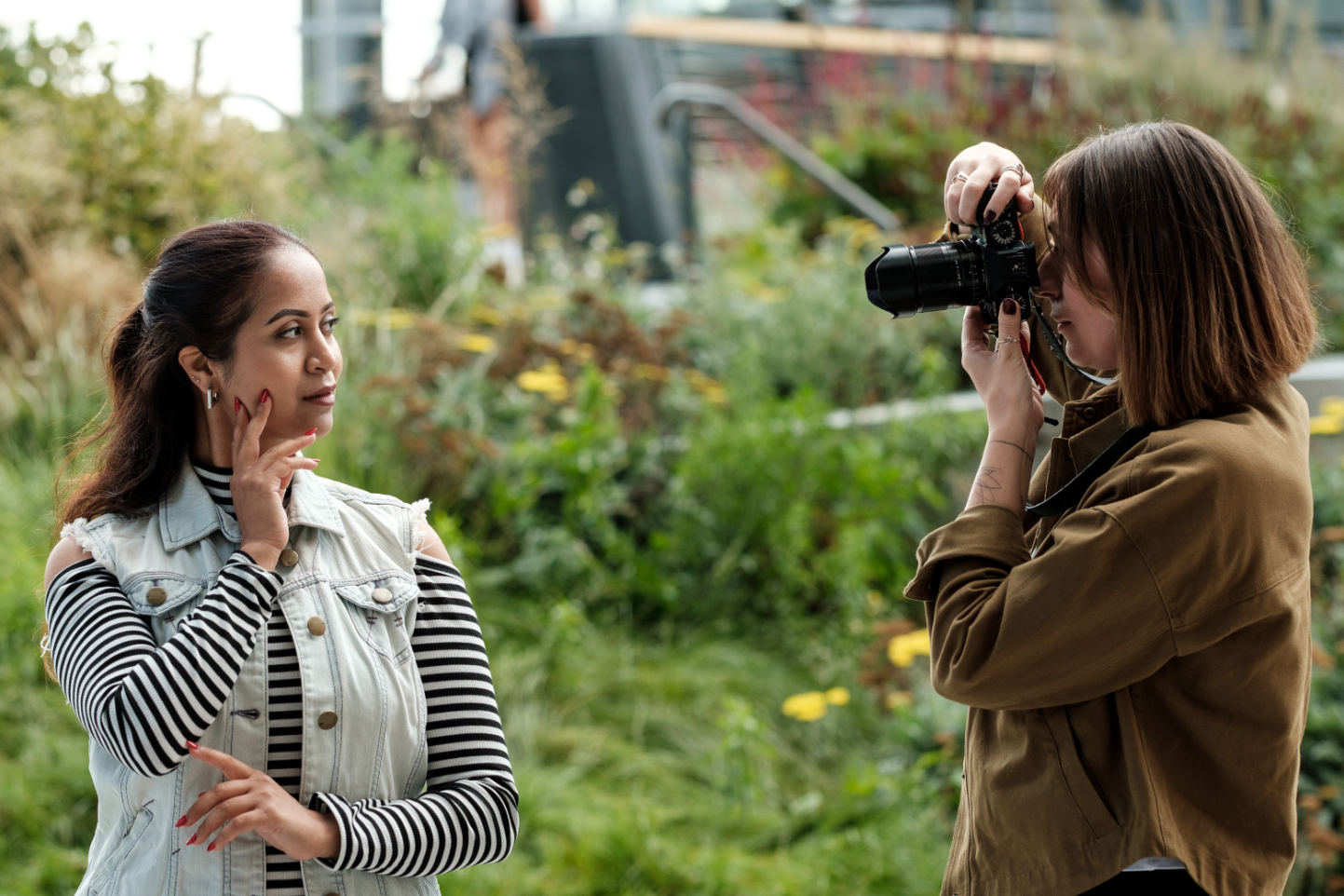Unlock Next-Gen Visuals: 5 Film Production Innovations

The world of film production is a breathtaking canvas, constantly evolving with new strokes of technological brilliance. What was once considered science fiction is now becoming standard practice, pushing the boundaries of visual storytelling and bringing never-before-seen worlds to life. From the sprawling fantasy landscapes of blockbuster series to the intimate narratives of indie gems, these innovations are reshaping how stories are captured, crafted, and consumed.
At FilmBaker, we're passionate about staying ahead of the curve, exploring the tools and techniques that define the next generation of filmmaking. We believe that understanding these advancements isn't just about keeping up; it's about unlocking unprecedented creative potential. Let's dive into five groundbreaking film production innovations that are revolutionizing the industry and setting the stage for truly spectacular visuals.
Pioneering the Future of Filmmaking
The pace of innovation in film production has never been faster. Driven by advancements in computing power, artificial intelligence, and a demand for ever more immersive and believable visuals, filmmakers now have access to a suite of tools that were unimaginable just a decade ago. These innovations are not just about making things look prettier; they're about enhancing efficiency, expanding creative freedom, and even making the production process more sustainable.
Embracing these technologies allows production teams to tackle complex visual challenges with greater agility and precision, often leading to more compelling narratives and unforgettable cinematic experiences. For creators, this means more opportunities to realize their grandest visions without the traditional constraints of physical sets or arduous post-production workflows.
1. Virtual Production & LED Volumes
Forget the green screen; virtual production, particularly utilizing large LED volumes, has become a game-changer. Instead of actors performing in an empty studio against a chroma key backdrop, they interact directly with photorealistic digital environments displayed on massive LED screens surrounding the set. This technology provides real-time, in-camera visual effects, allowing directors, cinematographers, and actors to see the final shot unfold on set.
The benefits are immense: realistic interactive lighting from the digital environment, reduced need for extensive post-production VFX, and a far more immersive experience for actors. Shows like Disney+'s The Mandalorian and HBO's House of the Dragon have famously leveraged LED volumes to create expansive, believable worlds that feel entirely present on screen. It bridges the gap between pre-production planning and on-set execution, saving time and resources in the long run.
- Practical Tip: For projects with extensive fantasy or sci-fi settings, consider virtual production. While initial setup costs can be high, it can dramatically reduce post-production expenses and allow for greater creative flexibility during principal photography. Start by exploring smaller LED stages or even VR scouting tools to familiarize your team with the workflow.
2. AI and Machine Learning in Post-Production
Artificial intelligence is no longer confined to sci-fi plots; it's a powerful assistant in the editing suite. AI and machine learning algorithms are being integrated into various aspects of post-production, streamlining tedious tasks and opening up new creative avenues. This includes automated rotoscoping, intelligent object removal, upscaling low-resolution footage, and even assisting with color grading by suggesting optimal looks based on content analysis.
Beyond visual tasks, AI is also making strides in sound design, automatically cleaning up audio, transcribing dialogue, and even generating ambient sounds. While AI won't replace human artists, it's becoming an invaluable tool for speeding up workflows, ensuring consistency across vast amounts of footage, and allowing creative professionals to focus on the artistic nuances rather than repetitive manual labor.
- Practical Tip: Explore AI-powered plugins and features available in modern editing software (e.g., Adobe Sensei features). Use AI for preliminary tasks like noise reduction, basic color correction, or content-aware filling to free up your team for more complex, creative work. Always critically review AI's output and make human adjustments as necessary.
3. Advanced Camera Technology & Computational Photography
Camera technology continues its relentless march forward, offering unprecedented dynamic range, low-light performance, and resolution. But it's computational photography that's truly transforming what a camera can capture. This involves using software algorithms to process and enhance images beyond what a single lens and sensor can achieve, often by combining multiple exposures or frames.
Innovations like volumetric capture (creating 3D models of actors and objects), light field cameras (capturing depth information for post-focusing), and advancements in global shutter sensors are changing the visual language of cinema. These technologies enable filmmakers to capture richer, more detailed data, offering unparalleled flexibility in post-production for everything from intricate VFX to subtle stylistic adjustments.
- Practical Tip: Understand the specific capabilities of the latest camera systems (e.g., ARRI's dynamic range, RED's resolution, Sony Venice's interchangeable sensors). For specialized shots, investigate cameras with computational features that can solve on-set challenges, like capturing complex reflections or environmental details that are difficult to light traditionally.
4. Real-time Cloud Collaboration & Remote Workflows
The global pandemic accelerated the adoption of remote workflows, but the underlying cloud collaboration technologies were already transforming how films are made. Tools that enable real-time editing, visual effects rendering, sound mixing, and dailies review from anywhere in the world have become indispensable. Cloud-based platforms allow multiple artists and stakeholders to work on the same project simultaneously, regardless of their physical location.
This fosters a truly global talent pool, reduces the need for costly travel, and dramatically speeds up feedback loops. From directors reviewing edits on a tablet thousands of miles away to VFX artists collaborating on complex sequences across continents, these tools ensure that production can continue smoothly and efficiently, enhancing communication and breaking down geographical barriers.
- Practical Tip: Integrate robust cloud collaboration platforms like Frame.io or Evercast into your production pipeline, especially for post-production. Establish clear communication protocols and secure data transfer methods to maintain efficiency and protect intellectual property across distributed teams.
5. Sustainable Production Practices & Green Tech
Beyond visual spectacle, innovation is also driving the industry towards a more sustainable future. As awareness of environmental impact grows, film productions are adopting green technologies and practices to reduce their carbon footprint. This includes using energy-efficient LED lighting, transitioning to electric vehicles on set, powering productions with renewable energy sources, and implementing comprehensive waste reduction programs.
Virtual production itself contributes to sustainability by reducing the need for travel to various locations and minimizing the construction and subsequent demolition of physical sets. These eco-conscious innovations are not just about corporate responsibility; they often lead to cost savings and foster a positive image for studios and productions that prioritize environmental stewardship.
- Practical Tip: Implement sustainability checks at every stage of production. Partner with vendors who prioritize eco-friendly solutions, encourage recycling and composting on set, and consider the energy consumption of your chosen equipment. Aim for certifications like BAFTA albert to validate your green efforts and inspire your crew.
The Future is Now
These five innovations are just a glimpse into the dynamic future of film production. They represent not just technological marvels but opportunities for filmmakers to tell stories with greater fidelity, efficiency, and creative freedom than ever before. Staying informed and adaptable is key to harnessing their full potential.
At FilmBaker, we're committed to helping you navigate this exciting landscape. Whether you're an established studio or an aspiring indie filmmaker, embracing these next-gen visuals can elevate your projects to extraordinary heights. To explore how these innovations can transform your next production, get in touch with our team today: https://www.filmbaker.com/get-in-touch

